Some of America’s most famous chefs have decided to add to their job descriptions: They’ve become philanthropic visionaries, helping everyone from kids who don’t get enough to eat to struggling farmers. And I believe that commitment is going to help save the world. It’s not as crazy as it sounds. As Rick Bayless says, “Most chefs I know who are really passionate about what they do are also really passionate about working in hospitality. Hospitality is all about giving and taking care of people. And clearly, the outgrowth of that can be charities.”
There is no group of people better suited to this task than chefs. With their rising celebrity, they’ve become impressively effective at raising money for good causes. As a result, the number of requests they receive has grown exponentially. So a few of the biggest stars have paused to ask themselves, Where would I like to devote my time and energy? Many answered this question by establishing their own foundations. Says José Andrés, “My foundation is part of the MBA of learning to be meaningful in our world as a chef.” Chefs with their own foundations can also gracefully decline certain requests that seem less vitally important—and sometimes, the people asking for help end up volunteering their own assistance in the chefs’ causes.
F&W wants to help, too. We’ve united 10 brilliant chef-philanthropists for the Chefs Make Change coalition; starting January 10, we’re asking our readers and everyone else to contribute to any of the chefs’ charities. In return, we’ve asked all the chefs to share two of their best recipes. These dishes are delicious, healthy and, on the whole, very affordable—just the kind of food that can help save the world.
Help these 10 superstar chefs make the world a better place by donating to one of their causes at foodandwine.com/donate.
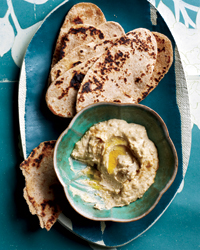
The Edible Schoolyard Project works to get an “edible education” into public schools through hands-on experience in school kitchens, gardens and lunchrooms. It also funds the Edible Schoolyard Berkeley, a one-acre garden and kitchen classroom at Martin Luther King Jr. Middle School, aimed at teaching kids to make healthy food choices and connecting them with the community and the environment. There are now six Edible Schoolyards across the country. edibleschoolyard.org.
On Starting the Edible Schoolyard “I kept passing the Martin Luther King Jr. Middle School on my way to and from Chez Panisse, and I was struck by the neglect—the broken windows, the general feeling that no one was paying attention. And I thought, What happened? Berkeley’s public schools used to be No. 1 in the state, and we’re down at 47.” Today, the King school is ranked eighth.
Master Plan “From day one, I knew I wanted Edible Education in all the public-school systems in the US, from kindergarten through high school. Somebody said to me, ‘You mean have EE, like PE?’ and I thought, Yes!”
Proud Moment “Two high school kids who graduated from King came to the garden while I was there with a reporter, and I was sort of nervous because the reporter began asking them questions and I had no idea what they would say. ‘We’ve come back to see how the garden’s growing,’ they told us. I said, ‘Why don’t you plant a garden at the high school?’ And they said, ‘We already have gardens at home.’ It was amazing.”
What’s Next “These programs are happening all over the country. We’re creating a website to collect everybody’s best practices and make them accessible to all.”
Her Recipes for F&W I chose food that is nutritious and that kids really like. “Kids like hummus,” says chef Alice Waters, “and they like to make the little flatbreads and heat them like tortillas; the whole process is irresistible, and the price is practically nonexistent.” That’s also true for the squash soup: It’s both affordable and really good for you.”
Hummus with Whole Wheat Flatbreads
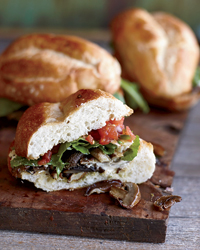
The Frontera Farmer Foundation promotes small, sustainable Midwestern producers by giving $12,000 capital development grants, enough to jump a farm ahead by five years. The money helps growers in Illinois, Indiana, Michigan and Wisconsin. rickbayless.com/foundation.
Success Story “We’ve probably funded more hoop houses than anything else, which means that local farmers can grow stuff in the winter. The very first project we funded, 15 years ago, was a hoop house for spinach. Now, you can go into any restaurant in Chicago in January or February and find local spinach on the menu, because of that one grant.”
Philosophy “You can’t have great local cuisine if you’re bringing in food from around the world. It’s not sustainable, and it also never feels like it’s of the place.”
Power of the Midsize Farm “We can help farms become larger and more efficient, and eventually make more money. The poultry guy who sells to my restaurants is a beautiful example of this. At first he raised only pastured pigs, which we loved, but we already had a pig farmer. So we said, ‘You probably have chickens, too, don’t you? We want you to do chicken for us the same way you do pork.’ Eight years later, he’s the largest pastured-poultry farmer in the US.”
Farming’s Future “Ten years ago, we used to hear statistics that all the farmers were getting old and the profession was dying. But now you see so many young farmers, and that’s very encouraging. I don’t see hipsters; I see young families doing what they really want to do.”
His Sandwich Recipe for F&W “The torta is in honor of our mushroom farmer. He was just raising mushrooms when he applied for a grant to put in a processing kitchen, so he could can them and make mushroom pickles and salsa. His business has taken off.”
Mushroom and Goat Cheese Tortas
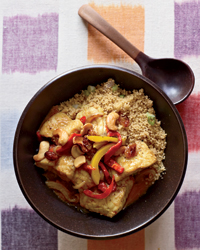
Modeled after Doctors Without Borders, Chefs for Humanity brings culinary professionals and educators together with both US and global organizations to provide nutrition education, hunger relief and emergency and humanitarian aid around the world. chefsforhumanity.org.
The Challenge “What I don’t think people understand yet is that chefs and other culinary professionals are just so important in emergency feeding relief. Untrained people don’t know how to keep food sanitary, and the last thing you want in a crisis is to have a food-borne illness break out. Having an amateur cook trying to feed 5,000 people a day is like saying, ‘I’m going to be on a Doctors Without Borders team, but I’m not a doctor.’?”
What Keeps Her Going “We raise money to help feed children in schools and orphanages. When we go to these places with the World Food Program to drop off rice and beans and supplies, these little babies walk up to us and hold their arms out, because they just want somebody.”
Money Matters “We are raising money not only through donations but also through my food products and merchandise—some of the proceeds go to Chefs for Humanity. I also do local fund-raisers for emergency-response teams, such as police departments, fire departments, EMTs. I did a lot of fund-raising on the Gulf Coast after Katrina, and I also cooked every day for all those people in shelters.”
What’s Next “Every public school in the country should have a nutrition-education curriculum. We’re creating a pilot program at my son’s school. We are looking to create a replicable model that can help bring good nutrition to all children.”
Her Recipes for F&W “I love braises this time of year—whether an African stew or a fresh California-style stew. And quinoa is such a great grain; it’s so healthy and easy to make.”
Warm Quinoa Salad with Carrots and Grilled Chicken
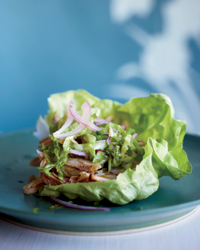
Wellness in the Schools (WITS) inspires public school kids to eat healthy, keep fit and respect the environment. Its Cook for Kids program brings culinary school graduates into cafeterias to generate excitement about healthy eating and to create tasty, cooked-from-scratch menus. Cook for Kids is currently in 25 New York City schools across three boroughs, reaching nearly 20,000 children. wellnessintheschools.org.
What Prompted Him to Join Wellness in the Schools “I was doing ‘recess duty’ at my daughter’s school and stopped in the cafeteria. The kids weren’t touching the salad bar—the lettuce was brown—so I went to the school and volunteered to create a salad-bar day with fresh greens, homemade dressings, raw vegetables. It was such a big, rousing success that I decided to get involved in a bigger way.”
Philosophy “To help the schools improve their lunches, my philosophy is, Why don’t we just do a little bit at a time? Let’s get kids to eat healthier, less processed foods and work from there. It’s not just about health, it’s also about behavior and academic performance—kids can’t learn well if they’re not eating well.”
Favorite Moment “I really love the Wellness Labs we do four times a year in all the schools. Chefs go into the classrooms with a seasonal ingredient, talk about how good it is for you and then make something out of it. When we focused on tomatoes recently, we brought little yellow ones, orange ones, red ones. I did a taste test for one kid, and the next thing I know I’m surrounded by five kids who want to try the tomatoes, and pretty soon they’re tearing up all the basil we brought and making mini flatbread pizzas.”
His Chicken Recipe for F&W “Thursday is chicken day at the schools, and it’s our most successful day of the week. We do a barbecue sauce, a Mediterranean marinade, a teriyaki glaze or a Latin marinade like the one in my F&W recipe—all made from scratch with fresh ingredients.”
Latin-Spiced Chicken in Lettuce Cups
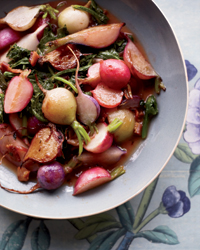
Lagasse has created an extraordinary number of ways to help at-risk children in the areas where his restaurants operate: educational programs, life-skills development, culinary training and cultural enrichment. A recent success is the culinary arts program for high school kids at New Orleans Center for Creative Arts (NOCCA). emeril.org.
His Philosophy “If you think big, then it’s going to be big.”
On Launching his Foundation “I was on the board of Andre Agassi’s foundation, and seeing the way it operated blew my mind. In 2002, I told my wife, I want to start a foundation to give back, I want it to be for kids in hard circumstances, and I want it to be culinary-driven, because that’s who I am.”
His Recipe Contest “This was for kids at New Orleans Center for Creative Arts. We tested all the recipes, then brought in a panel to judge the final three. They were so good we had three winners; all three went on restaurant menus throughout the city. For every order, a dollar went to the foundation. We raised $60,000 for the school’s kitchen and culinary-arts studio.”
Inspiring Story “Twenty-eight years ago, a boy came to see me when I was chef at Commander’s Palace. He had dropped out of school and was probably an eighth of an inch from going over the cliff because of all the drugs and crime in his neighborhood. I made a deal with him: I told him, ‘If you get your high school diploma, I’ll teach you how to cook.’ Today, he’s one of my culinary directors.”
What’s Next “We’re setting up an urban farm for kids on more than 20 acres in New Orleans. We want to make this a world-class educational center for the community.”
His Radish Recipe for F&W “Radishes grow just about anywhere. People think, ‘Oh it’s just a radish.’ But radishes are delicious, and people don’t think of cooking them.”
Sautéed Radishes with Orange Butter
Pasta with Roasted Squash, Sausage and Pecans
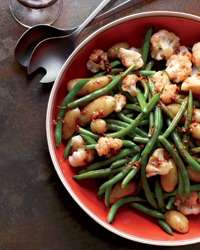
World Central Kitchen, led by José Andrés, helps developing countries in crisis. By building kitchens and cooking for hungry people using ingredients purchased from local stores, the organization aims to empower communities to create their own long-term solutions. It also promotes environmentally sustainable cooking technologies, including cookstoves that use solar energy. worldcentralkitchen.org.
On Starting World Central Kitchen “When the earthquake hit Haiti in 2010, I was on vacation in the Cayman Islands. My children were playing on the beach; I was enjoying the sun with my wife, having a margarita. When I heard about what was going on in Haiti, not so far away, that was the true moment when I said, ‘I’m a chef, I could be helping.’?”
On the Benefits of Solar-Powered Cookstoves “When mothers and daughters use our cookstoves, they aren’t inhaling harmful fumes. And because our cookstoves don’t use wood, we know the little girls aren’t working all the time to collect fuel, so maybe they can have the opportunity to go to school.”
Lesson From a Mentor “Let me tell you a story about when I was growing up in Spain. Many Sundays, we would invite 30, 40, 50 people to the countryside, and my father would make a big paella. He put me in charge of the fire and the ‘stove’—the rocks that hold the pan. But he wouldn’t let me cook. I got so unbelievably upset. Then my father said, ‘My son, what are you feeling bad about? Taking care of the fire and the stove, that is the most important thing.’?”
The Need for R&D “IBM has research and development; so do Microsoft and Nike and even José Andrés. But there hasn’t been enough R&D on feeding people in the Third World. This has to be part of the process; if not, we’ll keep throwing money at the problem instead of investing in true solutions.”
His Recipes for F&W “This is the kind of simple, humble food I have at home with my family on Friday nights.”
Garlicky Potatoes, Green Beans and Cauliflower
Roast Chicken Thighs with Lentil Stew
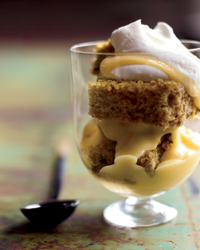
Wholesome Wave aims to make locally grown vegetables and fruit more accessible and affordable for people in seriously underserved urban and rural communities. One of its programs doubles the value of SNAP (Supplemental Nutrition Assistance Program) coupons—a.k.a., food stamps—at farmers’ markets. In turn, the increased market business also supports small-scale farmers. wholesomewave.org.
The Challenge “In the communities where we work, a family of four often has $2 to spend on dinner. A four-pack of Cup O’ Noodles is $1.50. A head of broccoli is $2. So what do you put in front of your family?”
Success Story “We’ve gone into ‘food deserts’—neighborhoods where stores don’t carry fresh produce— and created viable farmers’ markets. We’ve found that once people begin shopping at farmers’ markets, because we’ve added incentives to their SNAP (Supplemental Nutrition Assistance Program) benefits, they continue even when the incentives run out.”
Helping Farmers “We did a survey of 2,000 SNAP recipients and 1,700 farmers. We studied who the farmers were—48 percent were women. The average age was 45, almost 15 years younger than average. About 10 percent of the farmers saw enough of an increase in their business because of SNAP sales that they were able to add hoop houses or extend production. That’s because SNAP recipients show up in force at farmers’ markets, even at the end of the season or in the rain.”
What’s Next “Our latest initiative is our fruit and vegetable ‘prescription’ program, supported with private funds. Doctors in underserved communities can give an entire at-risk family a farmers’ market voucher that will allow them to increase their fresh-produce consumption by one to two servings a day.”
His Beet Cake with Bourbon Sauce Recipe for F&W “My dad was from Kentucky, so we’ve always appreciated bourbon and kept it on hand. Beets and bourbon love each other!”
Braised Pork with Cherry Gravy
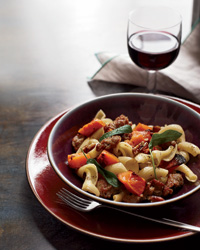
Dream recipes from chefs who make change, like Emeril Lagasse’s pasta with squash, sausage and pecans. Photo © Constantine Poulos.
No comments:
Post a Comment